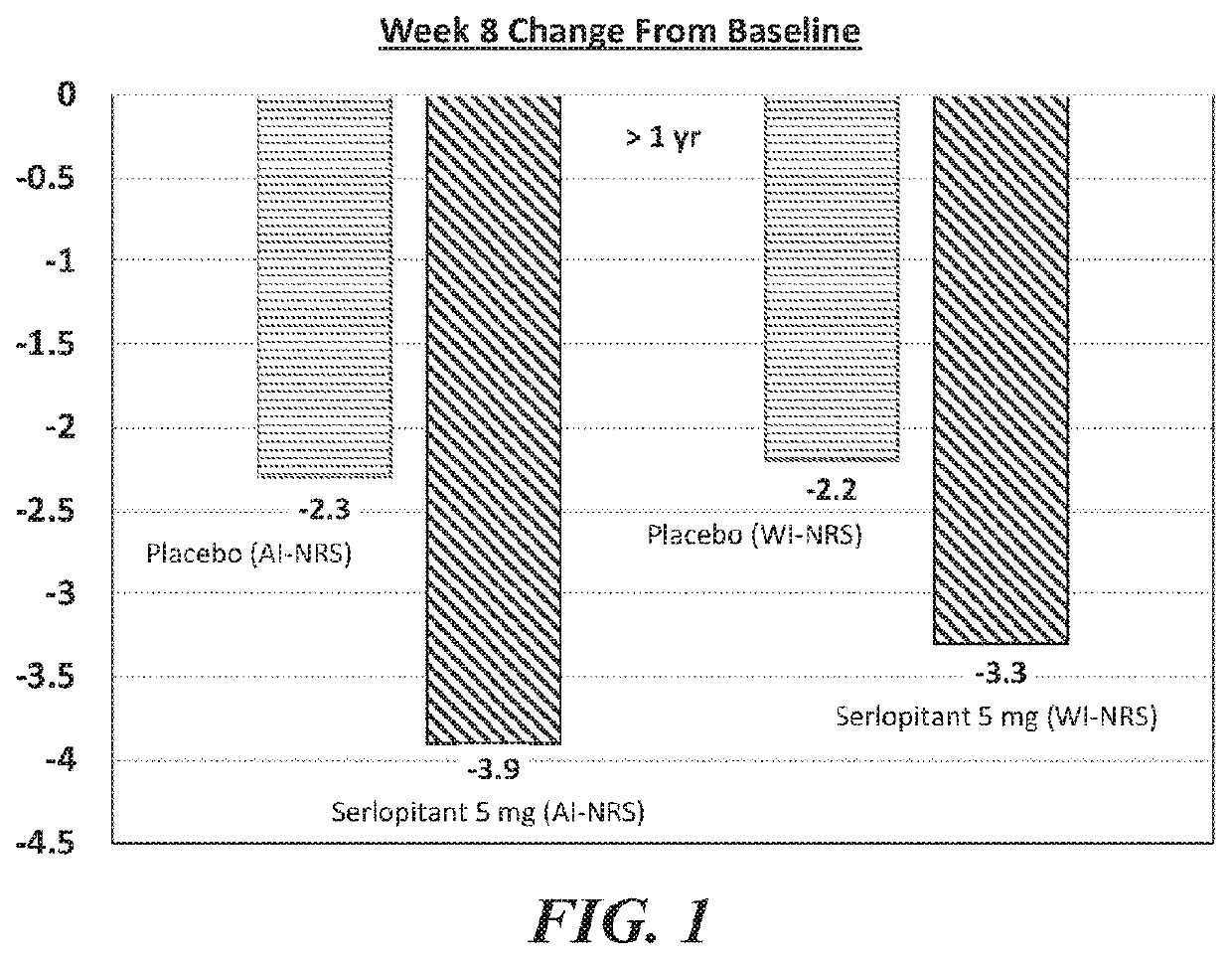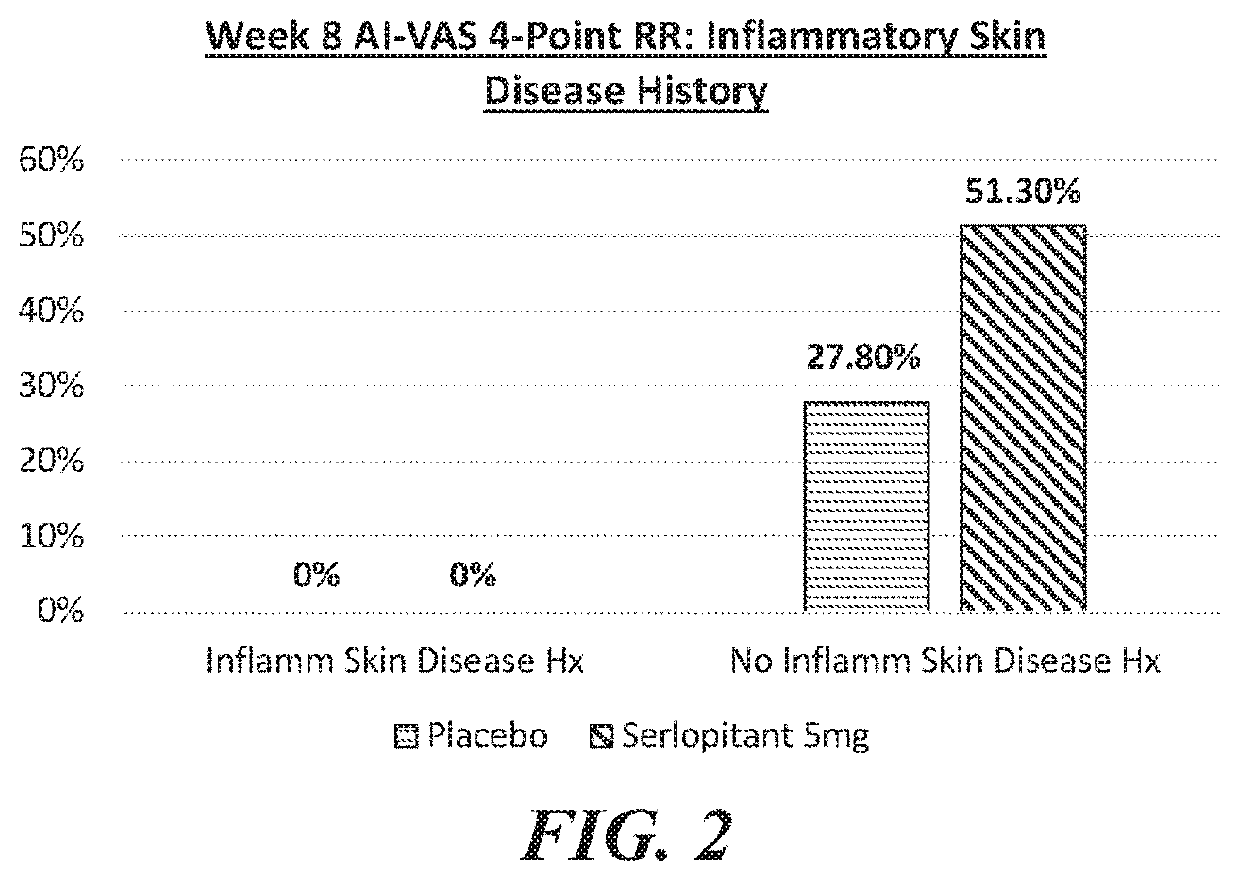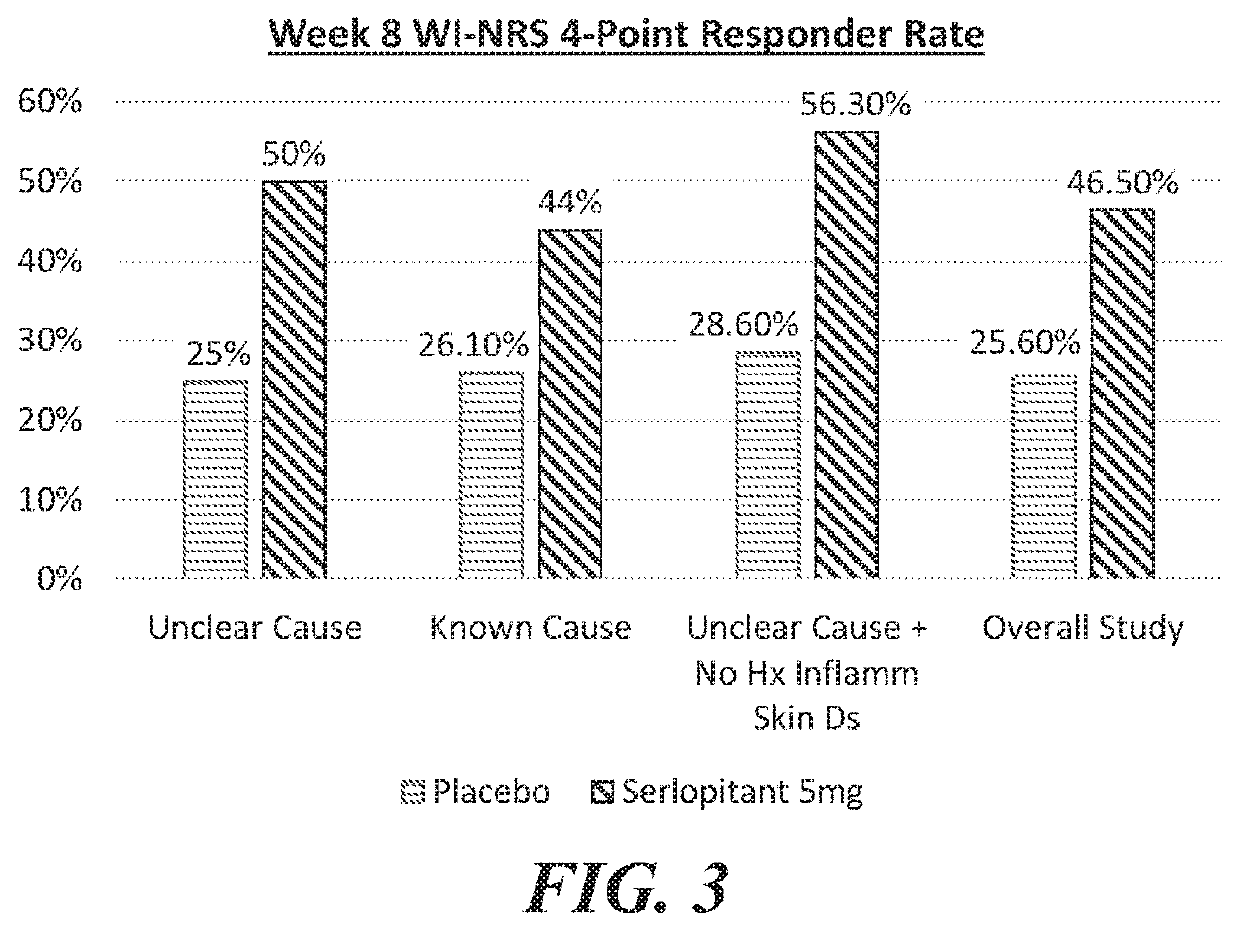Use of neurokinin-1 antagonists to treat pruritus
a neurokinin-1 and pruritus technology, applied in the field of neurokinin1 (nk1) antagonists, can solve the problems of affecting patient behavior, reducing the quality of life, and increasing the severity of the underlying diseas
- Summary
- Abstract
- Description
- Claims
- Application Information
AI Technical Summary
Benefits of technology
Problems solved by technology
Method used
Image
Examples
example 1
on of Serlopitant Tablets
[0204]The NK-1 antagonist serlopitant can be formulated as a tablet for oral use. Table 1 shows qualitative / quantitative composition of exemplary dosages. Minor variations in the excipient quantities (+ / −10%) may occur during the drug development process.
TABLE 1ComponentsFunction% of CompositionSerlopitantActive agent1-6%Microcrystalline celluloseDiluent50-60% MannitolDiluent20-30% Croscarmellose SodiumDisintegrant1-3%Colloidal silicaDisintegrant0.25-0.5% Sodium Lauryl SulfateSurfactant5-6%Magnesium StearateLubricant0.25-2% Total Tablet Composition100%
[0205]Tablet potencies of 0.25 mg, 1 mg and 5 mg are prepared as a compressed tablet formulation. The tablet manufacturing process is the same for all potencies. The process comprises the following steps: 1) serlopitant, mannitol and sodium lauryl sulfate are blended; 2) the remaining mannitol is added to the blender and mixed; 3) microcrystalline cellulose, croscartnellose sodium and colloidal silica are ad...
example 2
on of Serlopitant Capsules
[0206]Serlopitant can also be formulated as liquid-filled capsules. Table 2 shows qualitative / quantitative composition of exemplary dosages. Minor variations in the excipient quantities (41-10%) may occur during the drug development process.
TABLE 2Unit StrengthComponentsFunction0.25 mg1 mg4 mgCapsule FillSerlopitantActive agent0.25mg1mg4mgMono- & Di-glyceridesSolubilizer399mg398.6mg395.6mgButylated HydroxyanisoleAntioxidant0.40mg0.40mg0.40mgCapsule Shell#0 White OpaqueCapsule shell96mg**96mg**96mg**Hard Gelatin Capsule*Gelatin***Banding———componentPolysorbate 80***Banding———component*Capsules are provided by Capsugel (Morristown, New Jersey) and contain gelatin and titanium dioxide**Approximate weight of empty capsule shell***As needed to seal the capsule shells
[0207]The formulation is prepared by dissolving the drug substance in mono- and di-glycerides. Furthermore, 0.1 wt % butylated hydroxyanisole is added as an antioxidant. Initial capsule strengths are...
example 3
Study of Serlopitant for Prurigo Nodularis (PN)
[0209]A well-controlled human clinical trial assessing the efficacy of serlopitant in the treatment of subjects with Prurigo Nodularis (PN) was approved by an Institutional Review Board and was conducted in accordance with the International Conference on Harmonisation (ICH) Guidelines for Good Clinical Practices, the U.S. Code of Federal Regulations, the Health Insurance Portability and Accountability Act (HIPAA), and any local regulatory requirements. The study was a Phase 11 randomized, double-blind, parallel-group, placebo-controlled, multicenter trial designed to evaluate the efficacy and safety of serlopitant (5 mg) versus placebo in subjects with PN.
[0210]Prurigo Nodularis (PN) is a chronic condition characterized by a severely itching papulonodular eruption due to chronic scratching along with chronic pruritus of unknown aetiology. The study subject population was adult males and females 18-80 years of age who have PN of more tha...
PUM
| Property | Measurement | Unit |
|---|---|---|
| time | aaaaa | aaaaa |
| time | aaaaa | aaaaa |
| time | aaaaa | aaaaa |
Abstract
Description
Claims
Application Information
 Login to View More
Login to View More - R&D
- Intellectual Property
- Life Sciences
- Materials
- Tech Scout
- Unparalleled Data Quality
- Higher Quality Content
- 60% Fewer Hallucinations
Browse by: Latest US Patents, China's latest patents, Technical Efficacy Thesaurus, Application Domain, Technology Topic, Popular Technical Reports.
© 2025 PatSnap. All rights reserved.Legal|Privacy policy|Modern Slavery Act Transparency Statement|Sitemap|About US| Contact US: help@patsnap.com



